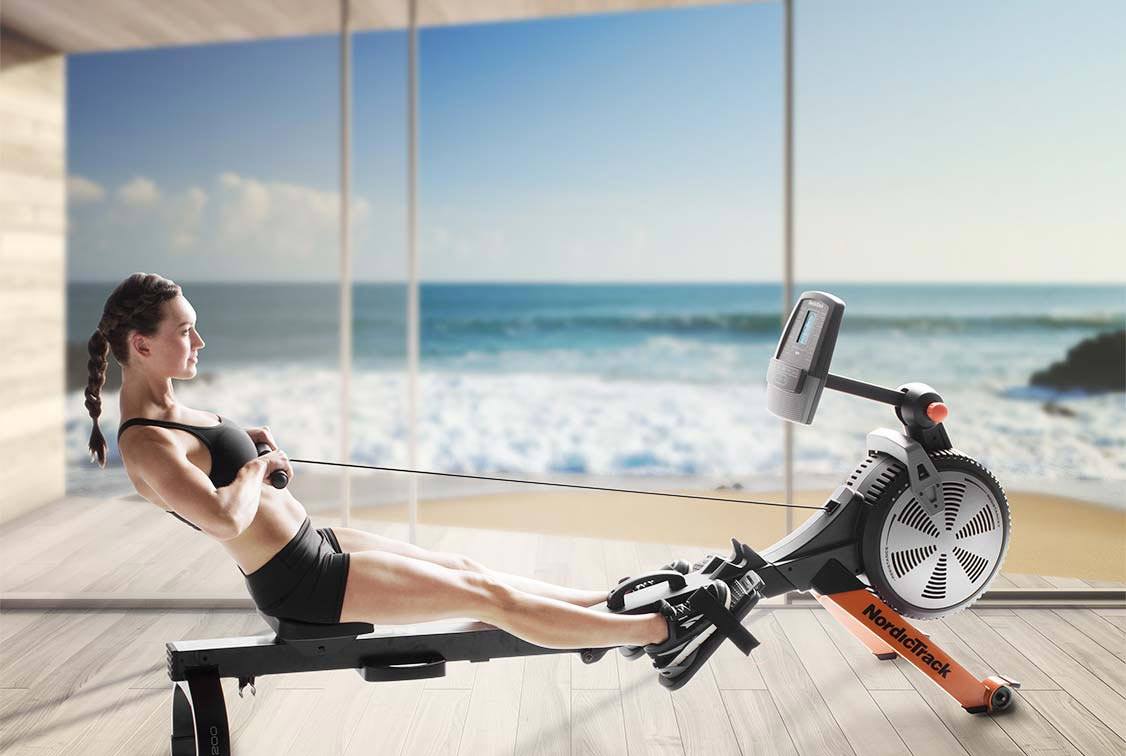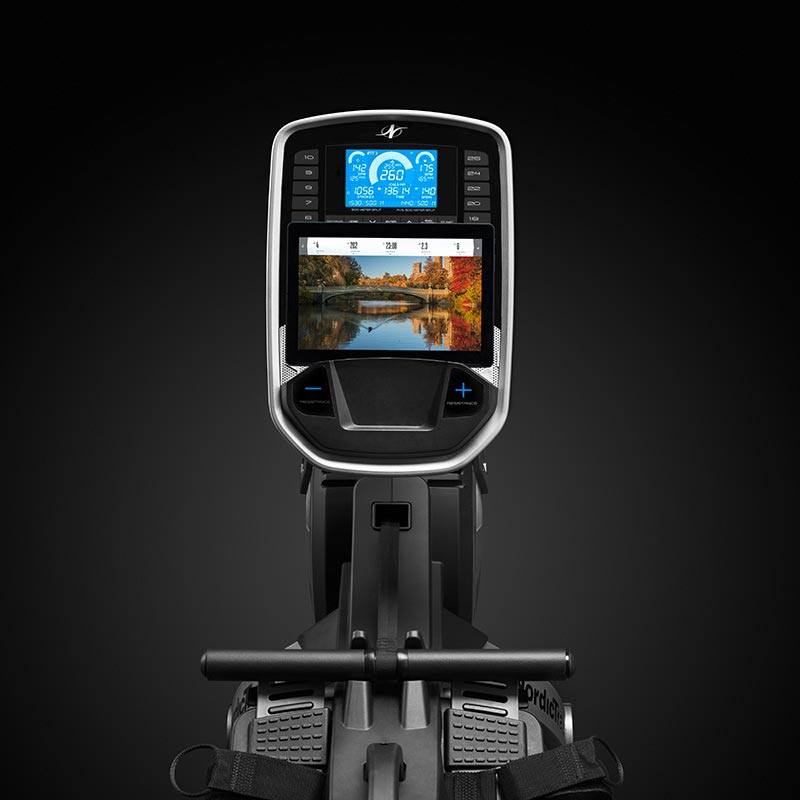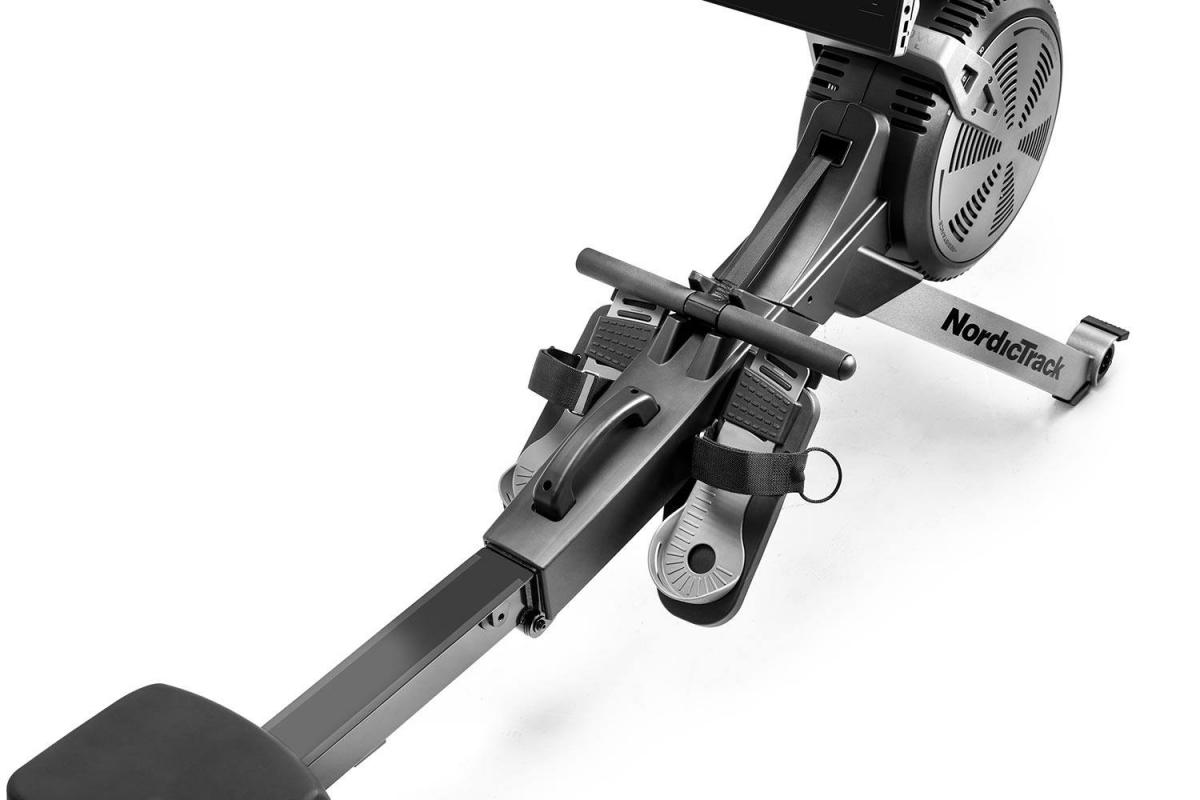The rowing machine, or rower, is often referred to as the most complete fitness device. Working 90% of the body’s muscles, it’s hard to deny that claim. It is one of the most powerful cardio machines, increasing flexibility and even known to reduce stress. Why not take the plunge and try one?
An ultra-complete workout

Ask around to find out which is the most complete fitness machine, and you will most often get the rower as your answer. It’s a well-earned title. It works the most muscles of any device, even compared to an elliptical, which uses 80% of the body’s muscles in each session.
It accomplishes this thanks to its design:
- The sliding seat makes your legs work
- The handle makes you work your arms and shoulders
- Your abdominal and back muscles are mobilized to control your upper body thrust, forward and backward.
Even the muscles that maintain your joints, called fixator muscles, are used.
The result is complete muscle reinforcement unmatched by other fitness machines. The rower will strengthen your back, arms and abs while toning your chest and firming up your glutes. Your entire figure will be in for an upgrade!
An overview of rowing machine muscle use

It’s impossible to name all the muscles that get worked on during a rowing session, but here are the main ones.
In the upper body:
- Deltoids, the shoulder muscles connecting the humerus to the shoulder blades and collarbone, are activated with each stroke
- Your triceps pull the handles towards you
- Your biceps come into play when you bend your arms to bring the “oars” to your chest
- The pectoral muscles also work when pulling
In the lower body:
- The glutes are used throughout movement on the machine
- The quadriceps, at the front of your thighs, are used to bend your knees and return to the starting position
- The hamstrings, between the hips and the knees, enable you to push your body backwards to pull the oars
- The calves work to restrain movement when you bend your knees
Back muscles:
- The latissimus dorsi controls the extension of the arms and the release of the handles
- The trapezius muscles control the shoulder blades and enable you to pull the oars
- The rhomboids, between the spine and the shoulder blades, support the trapezius
Abdominal area:
- Obliques stabilize the body
- Abdominal muscles support the body, so you can lean forward and straighten backwards
Bodybuilding, cardio and more

As you can see, rowing machines enable a more complete muscle reinforcement. But they are also an ideal device for cardio training and to strengthen the heart and respiratory system.
Working so many different muscles, you can burn a lot of calories: 300-400 calories per hour at low intensity, and up to 800 at high intensity. It is the ideal complement to a balanced diet when your intention is to lose weight, or more accurately, fat. The rower can erase the cellulite and the flabby areas at the top of the thighs. It can help to prevent back pain, improve flexibility (thanks to its required range of motion), and reduce stress while positively impacting your mood.
Is it a miracle device? Not quite. For maximum effectiveness, you need to train on it regularly. However if you do, you’ll see fast results: in a few weeks, at the rate of 2 weekly sessions, you will see a more sculpted, better toned body in the mirror.
Rowing downstream
Rowing machines are also easy on the joints and suitable for overweight people and pregnant women. Keep in mind, though, that it does take a little time to learn how to use the machine correctly. If you’re a beginner, consider 2 or 3 sessions with a coach, or a friend who can instruct you on how to use it correctly, to adopt the proper posture and right movements that will help you to row without making it feel like a painful chore.
One last advantage, rower machines are usually foldable, as is the case with NordicTrack devices, which combine ergonomics, comfort and space for storage. Maybe it’s the right time for you to get started…
Check out our Fitness & Training page for more advice.
Follow our Instagram for new and exciting updates.
We recommend
Main Muscle Groups Used In An Elliptical Workout
Elliptical machines can provide you with lower (calves, thighs, glutes) and upper (arms, back and pecs) body training, as well as an abdominal workout, making it one of the most complete…
Main Muscle Groups Used In An Exercise Bike Workout
While training on an exercise bike, you will primarily work your lower body muscles: your calves, thighs and glutes. Your abs will also get some work, and to a lesser extent, your arms…
Can Treadmill Running Help To Develop Muscles?
The treadmill is a fitness machine often chosen for cardio training at home. We almost forget that it’s also an ideal device to strengthen muscles. It gives your legs a thorough workout, of course, but…
Building muscle with the Freestride Trainer
Not familiar with the Freestride Trainer yet? It’s an innovative device that replicates the movements of an elliptical, a stepper and a treadmill. Now you’re wondering if it builds muscle, too?
